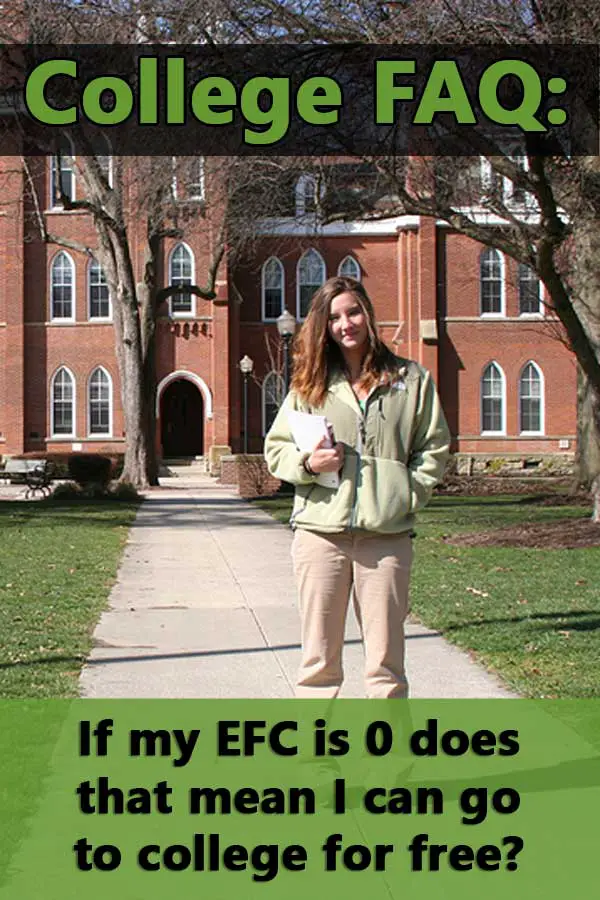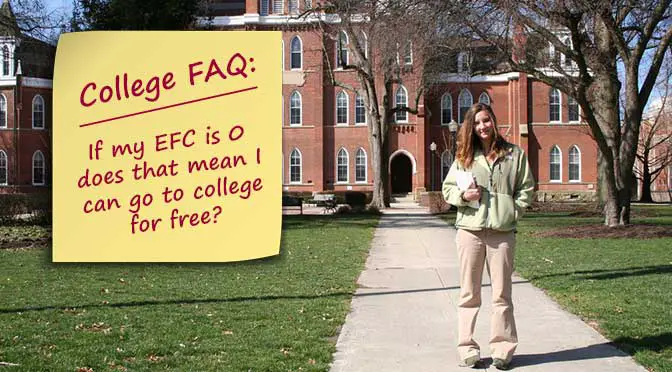 Unfortunately, even if your EFC is 0, the answer for most students is “no.” Although the federal government has determined that if your expected family contribution (EFC) is 0, there isn’t any requirement that the government or the college provide you with the money to pay for the total cost of your education. When your EFC is 0, you can be sure of receiving the maximum allowed Pell Grant for the year ($6345 for 2021) as well as qualifying for the maximum government subsidized loan. However, there are three issues you need to be aware of when your EFC=0.
Unfortunately, even if your EFC is 0, the answer for most students is “no.” Although the federal government has determined that if your expected family contribution (EFC) is 0, there isn’t any requirement that the government or the college provide you with the money to pay for the total cost of your education. When your EFC is 0, you can be sure of receiving the maximum allowed Pell Grant for the year ($6345 for 2021) as well as qualifying for the maximum government subsidized loan. However, there are three issues you need to be aware of when your EFC=0.
Download List of Best Bet Colleges for EFC=0
Institutional Methodology Calculates a Different EFC
The first is that the college you attend may not agree with the federal government’s calculation of EFC and determine students’ need by its own formula. This is called the institutional methodology as opposed to the federal methodology. There can be major differences in EFC in areas such as home equity. In these situations, the student would be eligible for the maximum amount of federal financial aid but not necessarily aid from the school. The amount of federal aid is limited to a combination of grants and loans you have to repay.
Different Definitions of Need Based Aid
The second issue is that most schools considered need-based loans such as subsidized Federal Direct Loans as need-based aid because the government is paying for the interest while the student is in school. Therefore, with the exception of a select few generously endowed institutions, the majority of colleges will expect students for an EFC=0 to take out the maximum amount allowed in federal student loans.
College work-study programs often fall under the same situation. Because work-study is funded by the federal government and the school, many schools classify it as need-based financial aid although it is money the student must earn. Colleges are not allowed to consider subsidized loans, work-study, or loans of any kind for that matter when calculating average net price. This is why it’s a good idea to use net price calculators when comparing colleges.
Most Colleges do not Meet 100% of Need
The third issue is that many schools “gap” student aid. Some schools simply do not have the funds to meet the financial aid requirements of all students while others choose to fund more merit aid programs. In either case, students do not receive the full amount needed to meet demonstrated need and will have to find aid elsewhere, usually in the form of private student loans or parent loans.
Students whose EFC is 0 should target schools that state they meet 100% of demonstrated need. Unfortunately, these are some of the most competitive schools in the nation. This also means that families need a reliable estimate of their EFC long before the student actually starts applying to schools.
For more information:
Financial Aid for Low Income Students-No Cause for Envy
50-50 Highlights: Schools with Lowest Average Net Cost for Families in Lowest Income Category–and which to avoid
Download List of Best Bet Colleges for EFC=0



2 thoughts on “FAQ: If my EFC is 0 does that mean I can go to college for free?”